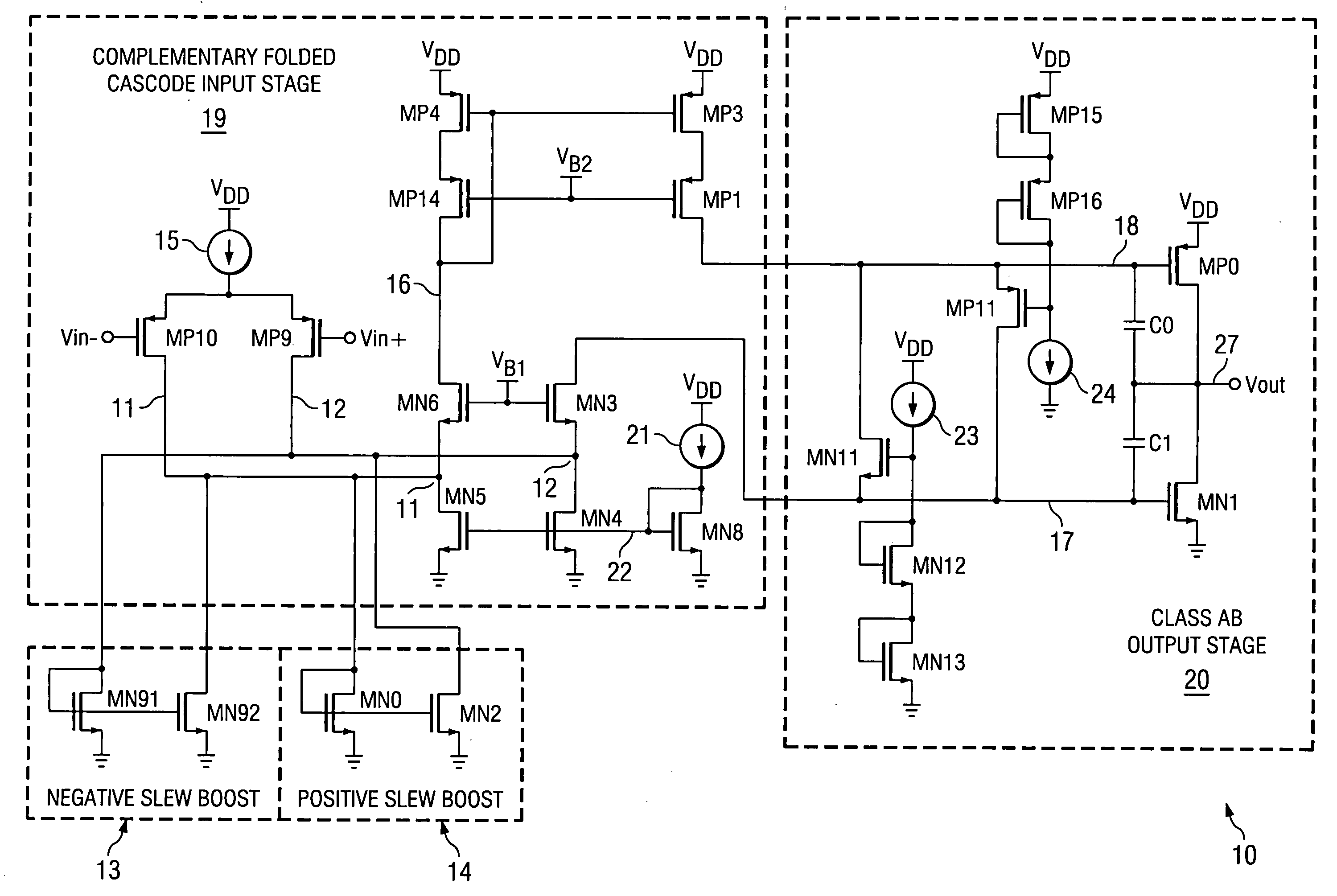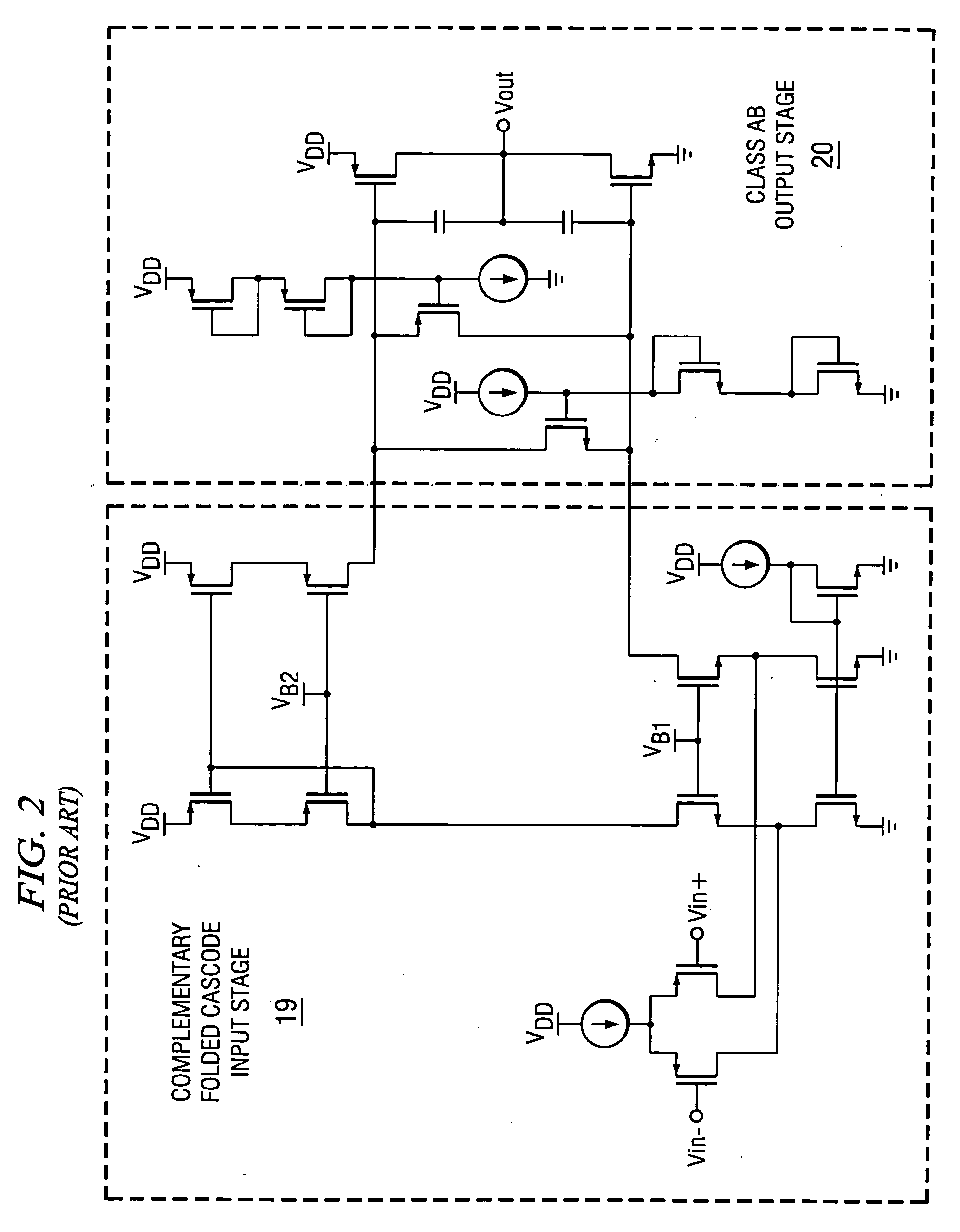Slew rate enhancement circuitry for folded cascode amplifier
a cascode amplifier and enhancement circuit technology, which is applied in the direction of dc-amplifiers with dc-coupled stages, amplifiers with semiconductor devices/discharge tubes, and differential amplifiers, can solve the problems of reducing the slew rate, adding to the total input referred noise, and low slew rate of the two-stage folded cascode amplifier. , to achieve the effect of low cost, high slew rate and low noise amplifier
- Summary
- Abstract
- Description
- Claims
- Application Information
AI Technical Summary
Benefits of technology
Problems solved by technology
Method used
Image
Examples
Embodiment Construction
[0022] In accordance with the present invention, two current mirrors are added in parallel with the junctions between the drains of the input transistors and the sources of the corresponding cascode transistors of a two stage folded cascode amplifier. During normal operation, the two current mirrors are completely shut off and therefore are “transparent” to the two stage folded cascode amplifier. The two current mirrors also provide current gain to charge and discharge the compensation capacitors to help provide a high slew rate.
[0023] The two current mirrors are activated by “excess current” from the input transistors of the input stage caused by a large, rapid transition of the input voltage applied to gates of the input transistors. When the resulting current produced by the input stage exceeds the current of a current source (e.g., transistor MN4 or transistor MN5) in one side of the second stage, the corresponding current mirror turns on proportionally, and therefore drives am...
PUM
 Login to View More
Login to View More Abstract
Description
Claims
Application Information
 Login to View More
Login to View More - R&D
- Intellectual Property
- Life Sciences
- Materials
- Tech Scout
- Unparalleled Data Quality
- Higher Quality Content
- 60% Fewer Hallucinations
Browse by: Latest US Patents, China's latest patents, Technical Efficacy Thesaurus, Application Domain, Technology Topic, Popular Technical Reports.
© 2025 PatSnap. All rights reserved.Legal|Privacy policy|Modern Slavery Act Transparency Statement|Sitemap|About US| Contact US: help@patsnap.com



